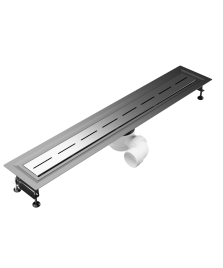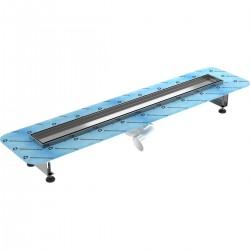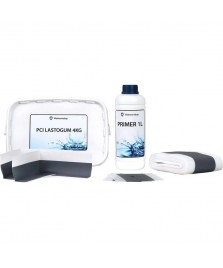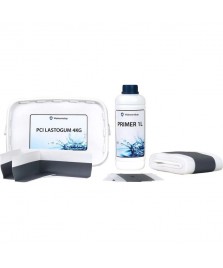- today
- perm_identity Chris Miller
- label Wet Room Kits
- favorite 0 likes
- remove_red_eye 4414 views

If you're thinking of tiling your bath panel, you might be wondering if it's possible. The short answer is yes, you can tile a bath panel! Tiling your bath panel is a great way to add some extra style and personality to your bathroom. Plus, it's a relatively easy DIY project that anyone can do.
Whether your current bathroom set up relies on traditional drainage, or its a wet room with a reliable linear shower drain, bath panel tiling can be a great way of improving the appearance and durability of your bathroom.
However, there are a few things to keep in mind before you get started. We cover everything you need to know to tile a bath panel:
What is Bath Panel Tiling?
Bath panel tiling is simply the process of tiling your bath panel. This can be done with any type of tile, but most people prefer to use ceramic or porcelain ones.
Tiled bath panel ideas
Tiling your bath panel is a great way to add some extra style and to update the look of a bathroom without having to undertake a complete renovation.
What's more, tiling a bath panel can be a way to make it blend into the rest of the bathroom, such as part of a larger tiled shower area. Without tiling, bath panels are usually distinct from the rest of a bathroom and sets the bath aside, whereas a bath with tiled panel can create a sense of unity. For example, if your bathroom has a white colour scheme, you can have a white tiled bath panel to match.
Benefits of Tiling
There are many benefits of tiling your bath panel. Here are some of the most popular reasons why you should tile your panels:
- Tiles are easy to clean and maintain. Just wipe them down with a damp cloth and they'll look as good as new.
- Tiling your bath panel is a relatively easy DIY project that most people can do successfully.
- Tiling adds value to your home and can make it more appealing to potential buyers if you ever decide to sell.
- Tiles give you the opportunity to add your own personal style to your bathroom. Choose from a wide range of colours, textures, and patterns to create a look that's unique to your home.
- Tiles are low-maintenance and require very little upkeep. Simply wipe them down on a regular basis and seal them every three to four years to ensure they stay in good condition. They can be cleaned using some soap and water, or you can use household cleaners like lemon juice, baking soda, or multipurpose cleaners to help keep the surface clean.
- Bath panel tiles are very versatile and can be used in a variety of design styles. Whether you prefer a traditional or contemporary look, tiling can be a great option for any bathroom.
- Porcelain and ceramic tiles are extremely durable, meaning they won't scratch or break easily. The grout beneath the tile is waterproof, so any water damage to the wall behind will be prevented.
Disadvantages of Tiling a Bath Panels
Although a bath with tiled panel offers many benefits, there are also several disadvantages that should be considered before deciding whether or not to tile your bathroom:
- Tiling a bath panel can be time-consuming and labour-intensive. It's important to take your time and make sure the tiles are laid correctly in order to achieve a professional-looking finish.
- Tiles can be expensive, depending on the type and quality you choose. However, they are a long-lasting investment that will last for many years.
- If not done correctly, tiling a bath panel can be a difficult and messy job. For this reason, it’s crucial to understand how to tile to avoid any costly mistakes.
Overall, tiling a bath panel is a great way to add value, style, and personality to your bathroom. Tiles are easy to clean and maintain, and they're a great DIY project for most people. Just keep in mind that tiling can be time-consuming and expensive, but it's worth it for the long-lasting results.
How to Tile a Bath Panel?
Tiling a bathroom panel is just like tiling any other part of your bathroom and can be completed in as little as a few hours:
- Begin by cleaning the bathroom panel with a mild cleaner and allowing it to dry completely.
- Next, apply an adhesive to the back of the tiles and spread it evenly using a spatula.
- Once the adhesive has been applied, stick the tiles onto the panel in the desired pattern.
- Use a leveller to ensure that the tiles are even and then allow the adhesive to dry for at least 24 hours.
- Finally, make sure to apply waterproof sealant between the tiles and wipe away any excess with a damp cloth. Allow the sealant to dry for 48 hours before using the bathroom.
Tips for Tiling a Bath Panel
If you're planning on tiling a bath panel, there are a few things you need to keep in mind to ensure a professional finish. Follow these tips to ensure that your tiling project is a success.
- Choose tiles that are easy to clean and maintain.
- Make sure the adhesive is of good quality and spread it evenly to avoid any unevenness in the tiles.
- Use a leveller to ensure that the tiles are even.
- Apply waterproof sealant between the tiles to prevent any water damage.
- Wipe away any excess sealant with a damp cloth.
- Allow the adhesive and sealant to dry completely before using the bathroom.
Browse Wetroomstop’s Tiling Products Today
If you're looking for building materials for tiling your bath panel, shop Wetroomstop's range of tile backer boards today. Used to provide a flat, even surface for installing ceramic tiles in wet areas, our tile backing boards provide extra support and stability to prevent tiles from cracking or popping off the bath panel.
For more information, you can reach us by phone at 020 3966 5876, by emailing us at info@wetroomstop.com, or come directly to our store in London.



















